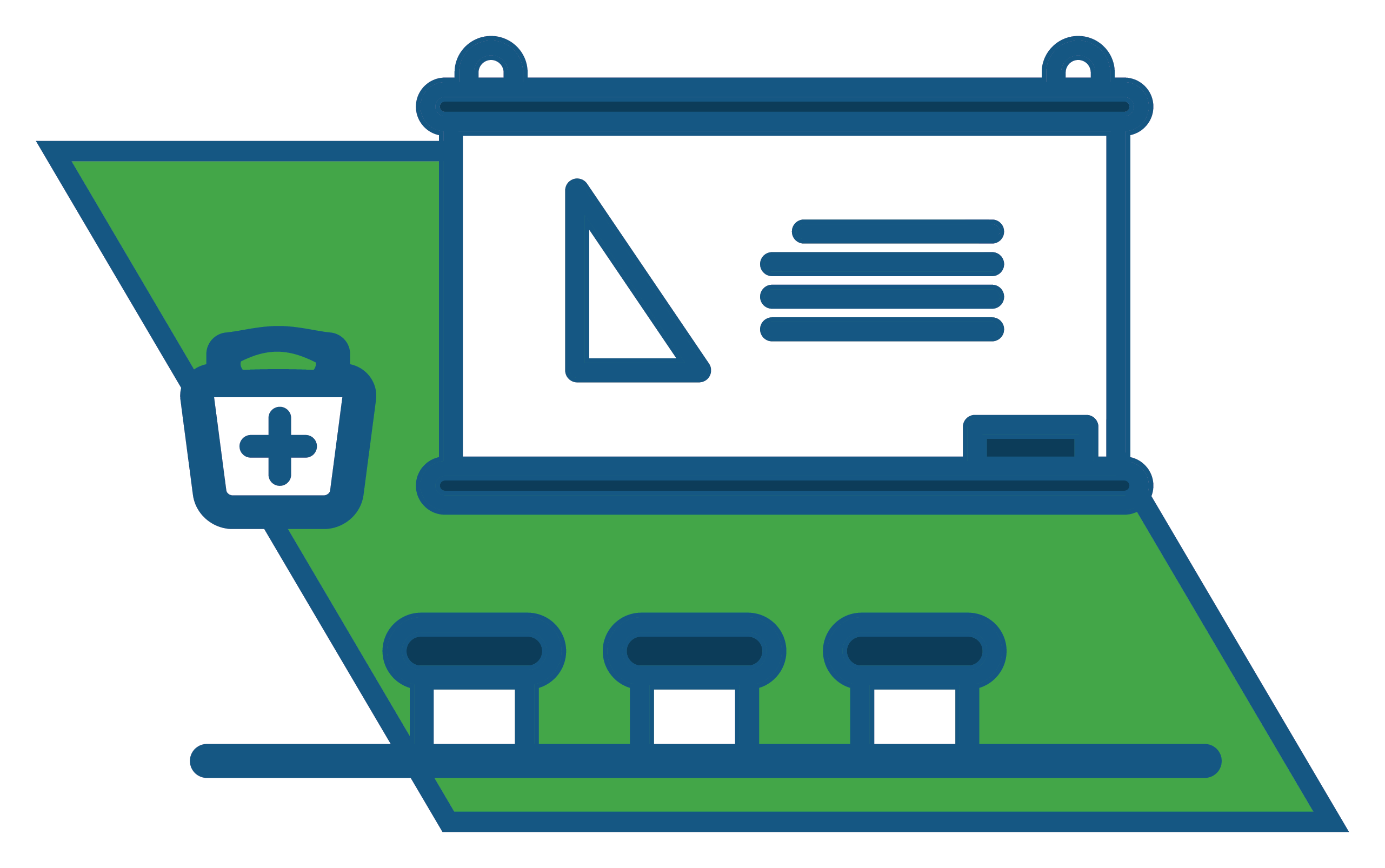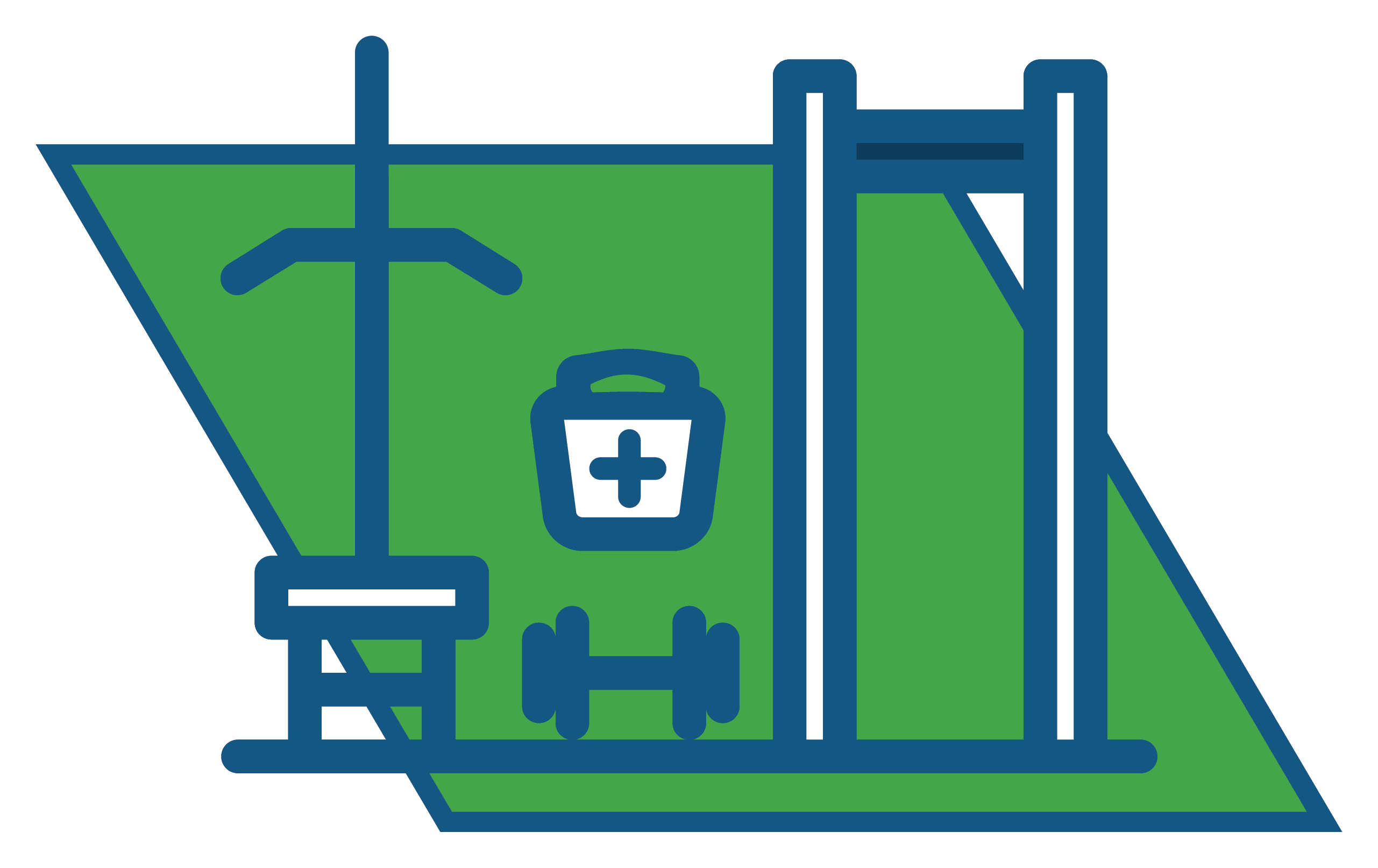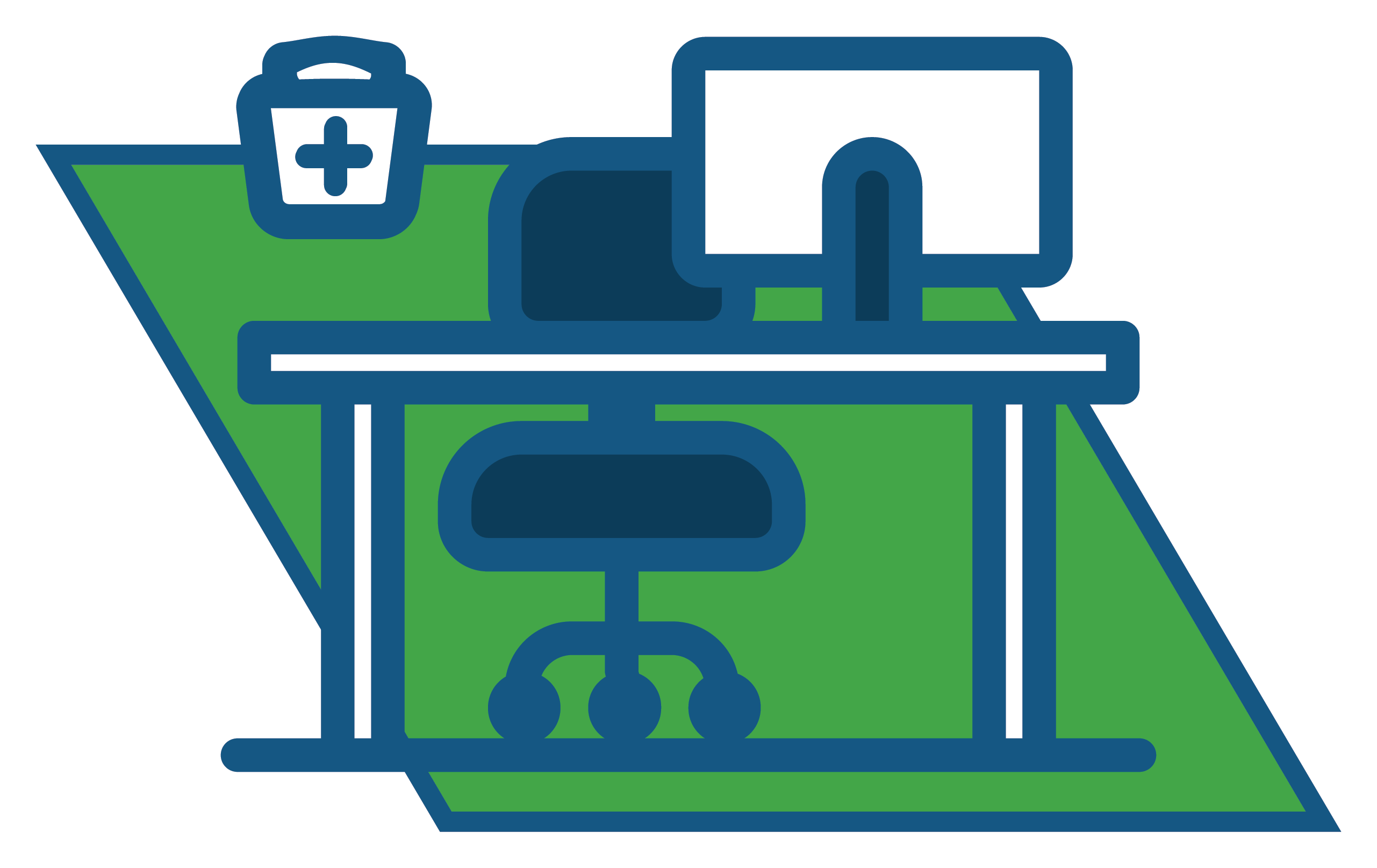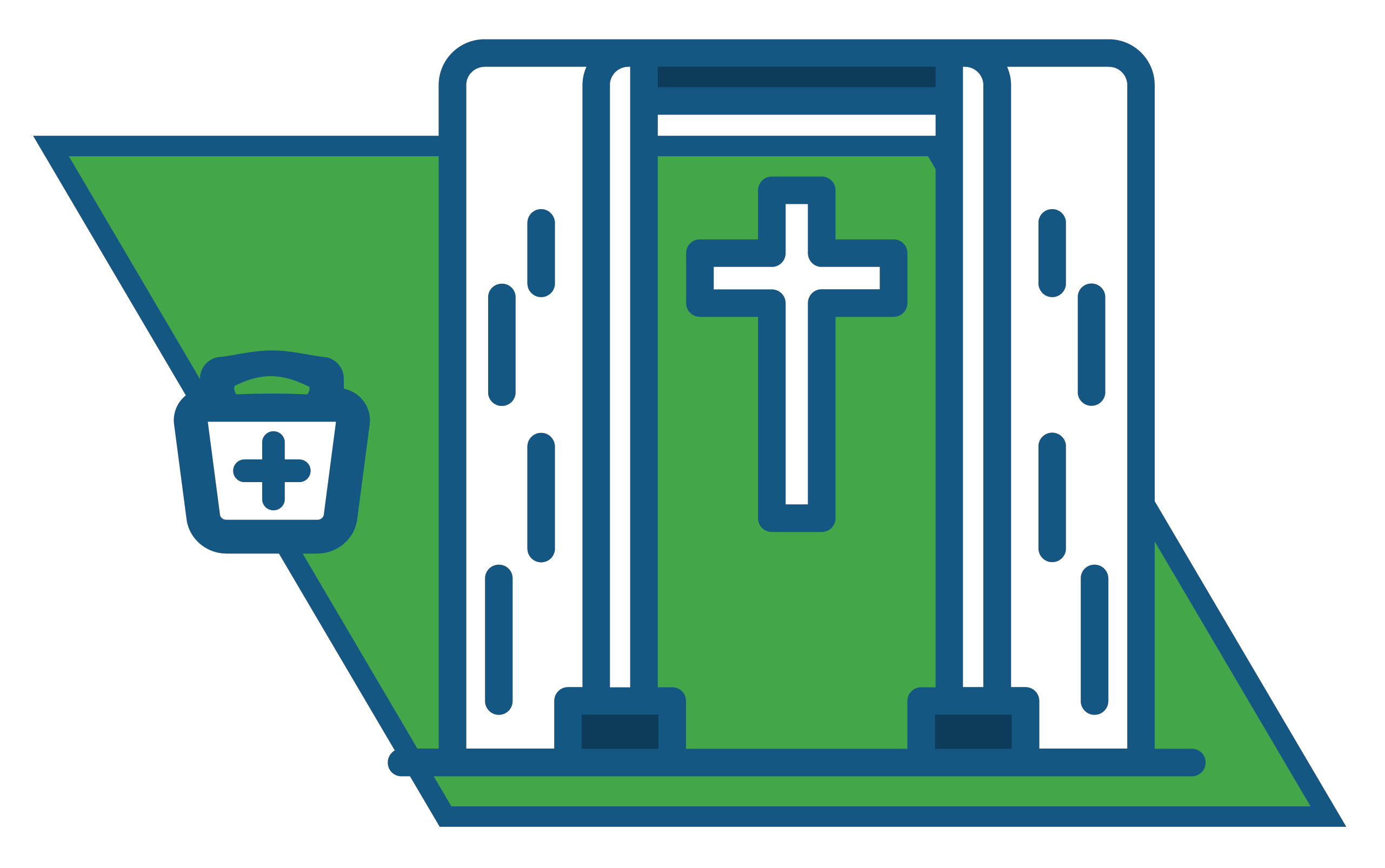What is An AED?
An Automated External Defibrillator, or AED, is a device used to save someone experiencing sudden cardiac arrest (SCA), a condition where the heart unexpectedly stops beating. AEDs are designed to be simple to use by non-medical bystanders to deliver immediate life-saving care.
Over 360,000 cardiac arrests occur outside of hospitals each year in the United States alone. These occur in homes, workplaces, schools, churches, parks, and public spaces. Many of these could potentially be addressed with immediate access to an AED.
According to the American Heart Association, the average survival rate for sudden cardiac arrest is only 10%. However, with immediate defibrillation and bystander CPR, survival rates jump to over 50%.
For every minute that defibrillation is delayed, the victim’s chance of survival decreases by 10%. If defibrillation occurs within the first five minutes of collapse, survival rates can be as high as 70%.
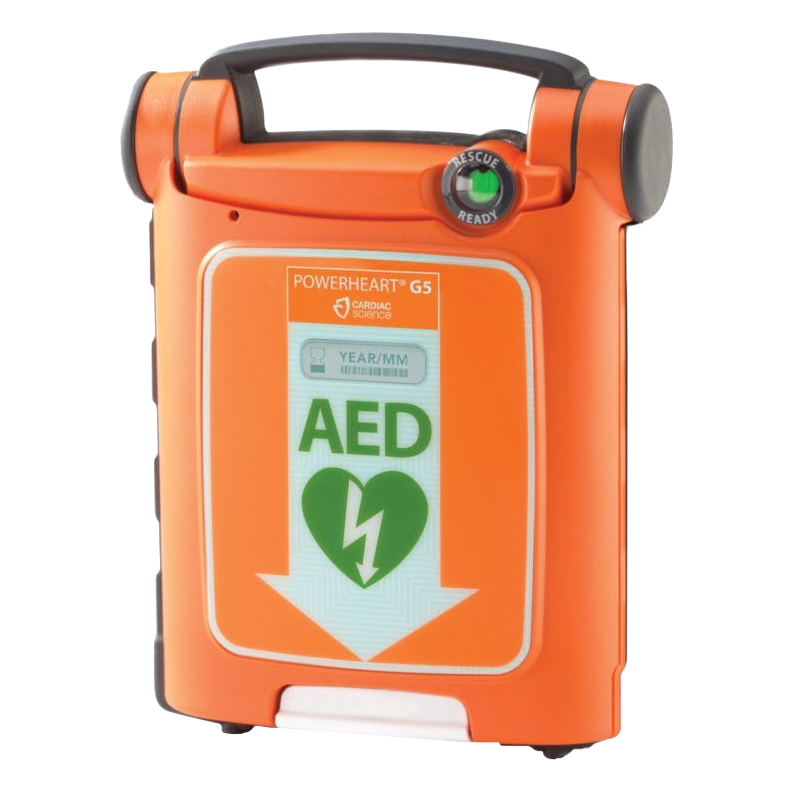
Featured AEDs
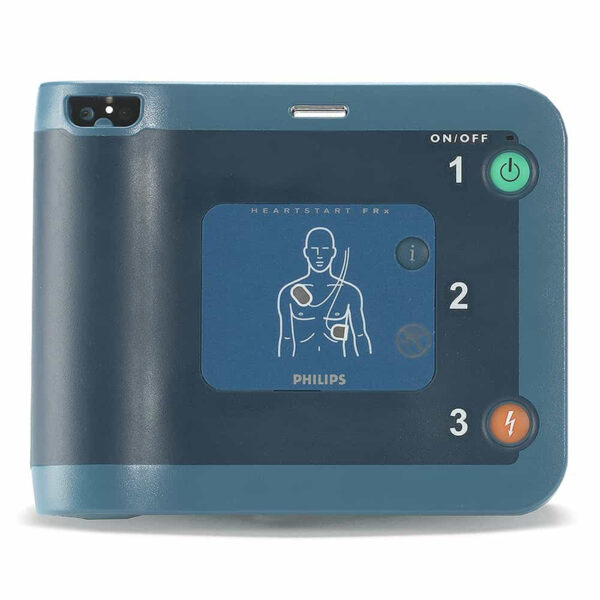
HEARTSTART FRX AED
The Philips FRx AED is a lightweight, tough, reliable device providing step-by-step voice instructions, CPR guidance and SMART biphasic shock technology. Optional pediatric key not included. The FRx is designed for ease-of-use and longevity
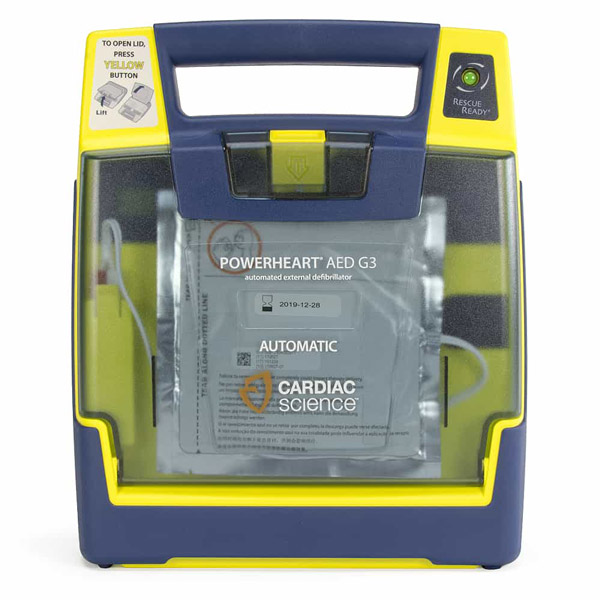
POWERHEART G3 AED
The Cardiac Science PowerHeart G3 AED, available in semi-automatic or fully automatic models, is equipped with STAR® biphasic waveform, voice and text prompts, and status indicators. The G3 is designed for clarity during critical moments.
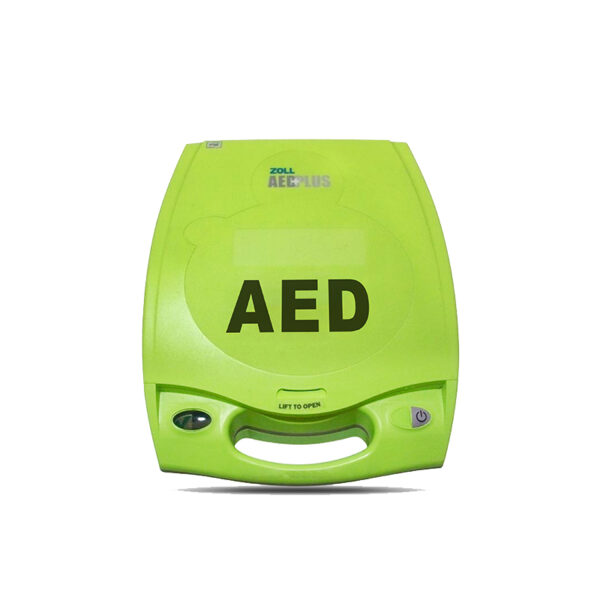
ZOLL AED PLUS
The ZOLL AED Plus sets a new standard for ease of use in emergency situations, delivering voice, text, and visual prompts alongside real-time CPR feedback. The AED Plus supports rescuers with Real CPR Help®, a robust design, and low ten-year cost of ownership.
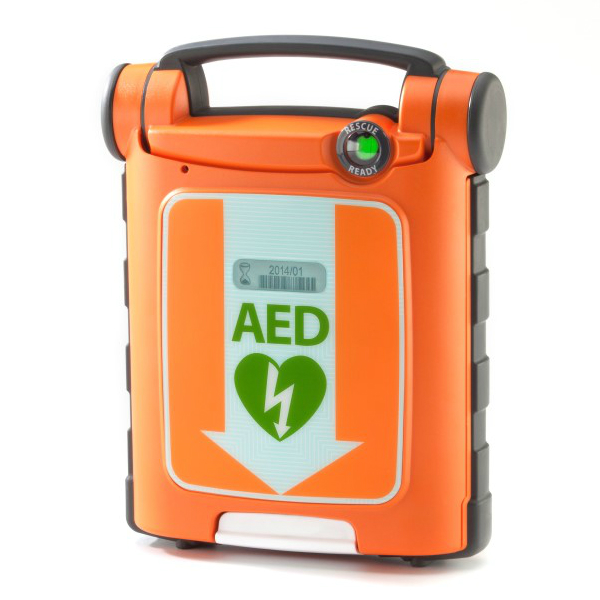
POWERHEART G5 AED
The Powerheart G5 AED from Cardiac Science boasts user-friendly features like dual-language functionality, clear voice and texts instructions, and variable escalating energy. The G5‘s rugged reliability and smart technology ensures readiness, all backed by an 8-year warranty.
Common AED Features
Simple Operation
All AEDs are designed to be easy to use with clear, straightforward instructions. With simple interfaces, minimal buttons, and automated functions, the device guides even untrained users through the process of saving a life.
Audio and Visual Prompts
AEDs provide step-by-step voice prompts and visual aids for rescuers. These instructions ensure the device is used correctly and effectively, guiding the user through steps, pad placement, when to stand clear, and when to give CPR.
Heart Rhythm Analysis
AEDs automatically analyze the victim’s heart rhythm to determine if a shock is necessary. This feature ensures defibrillation is only delivered if it’s needed, reducing the risk of misuse.
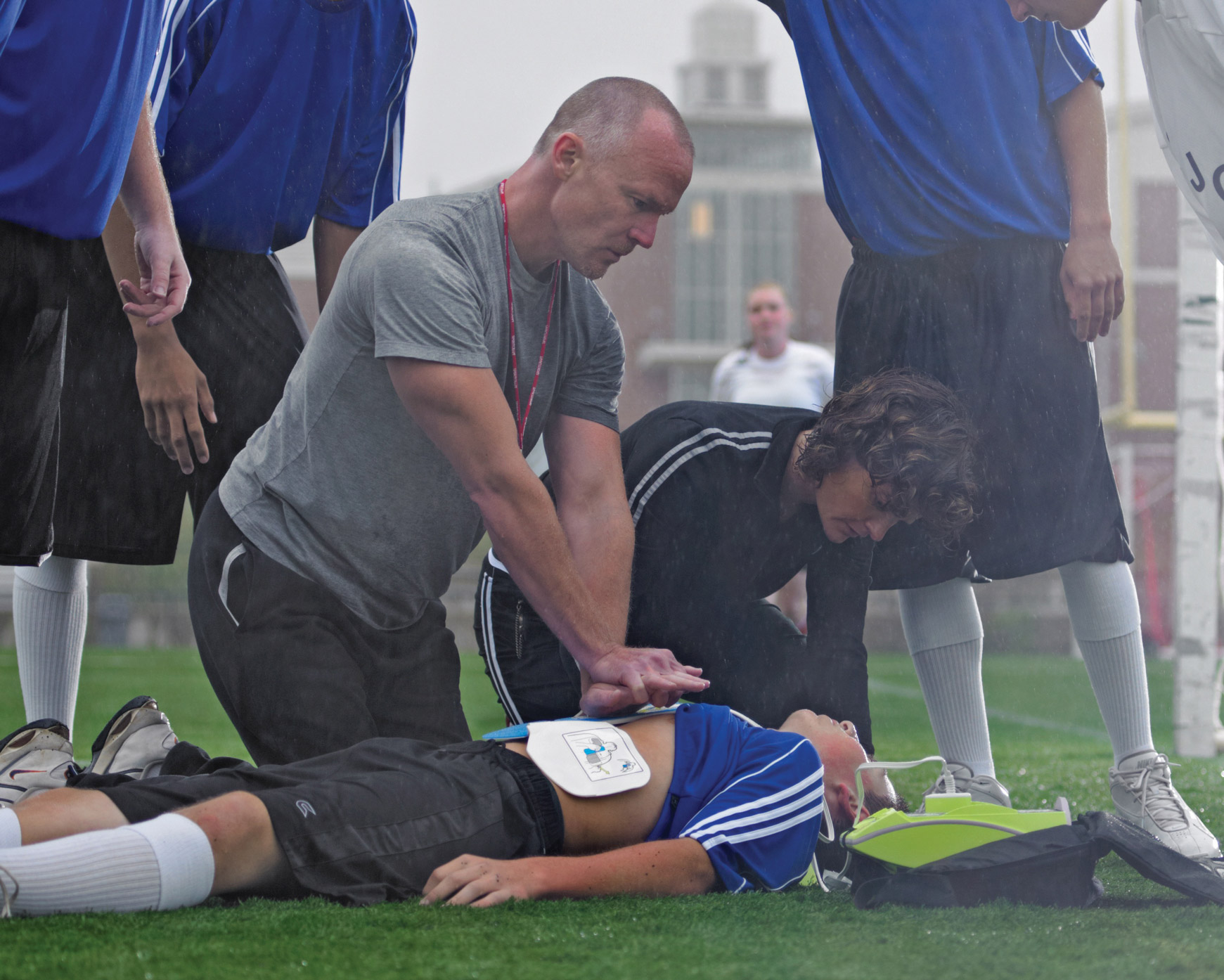
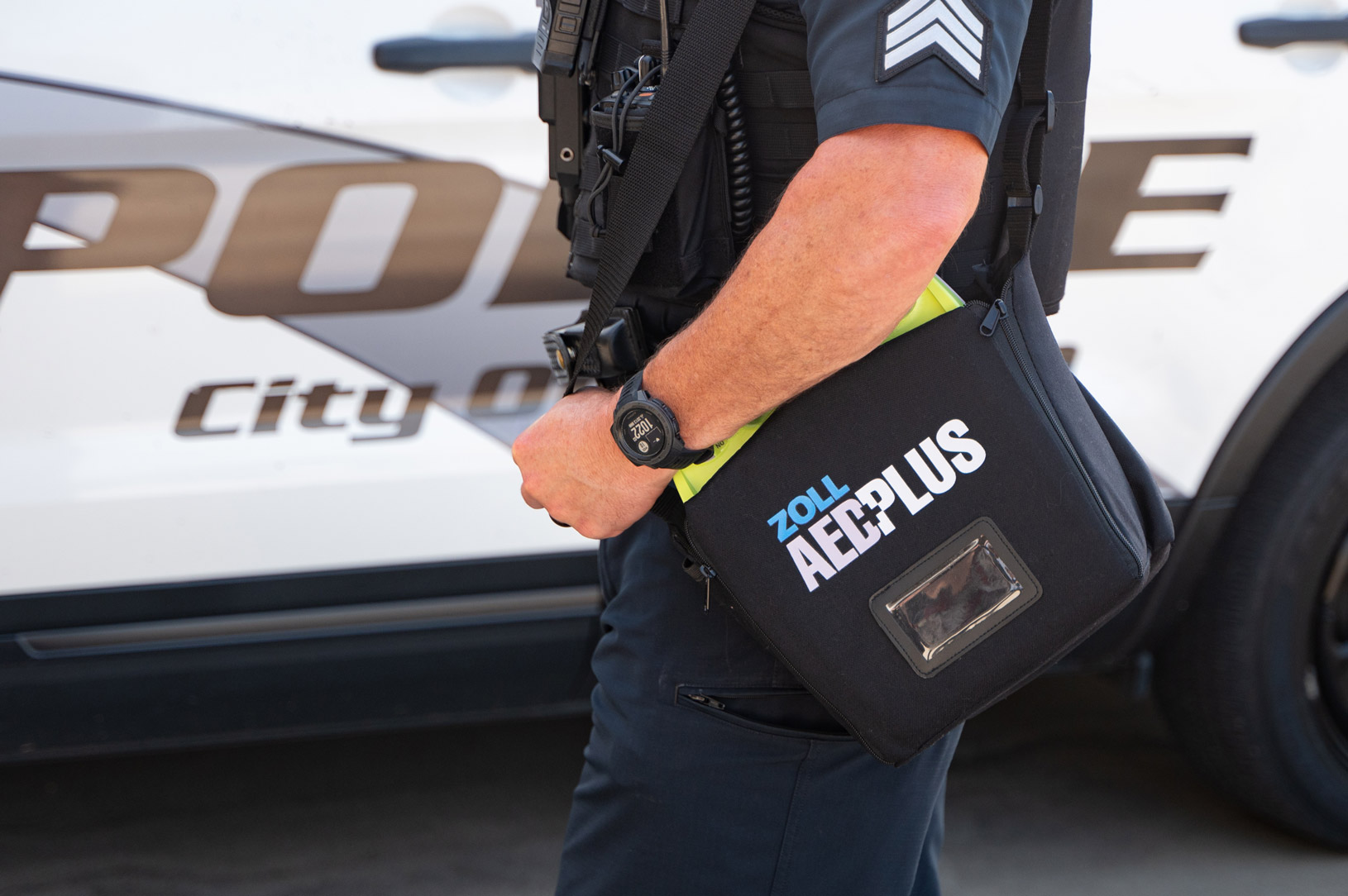

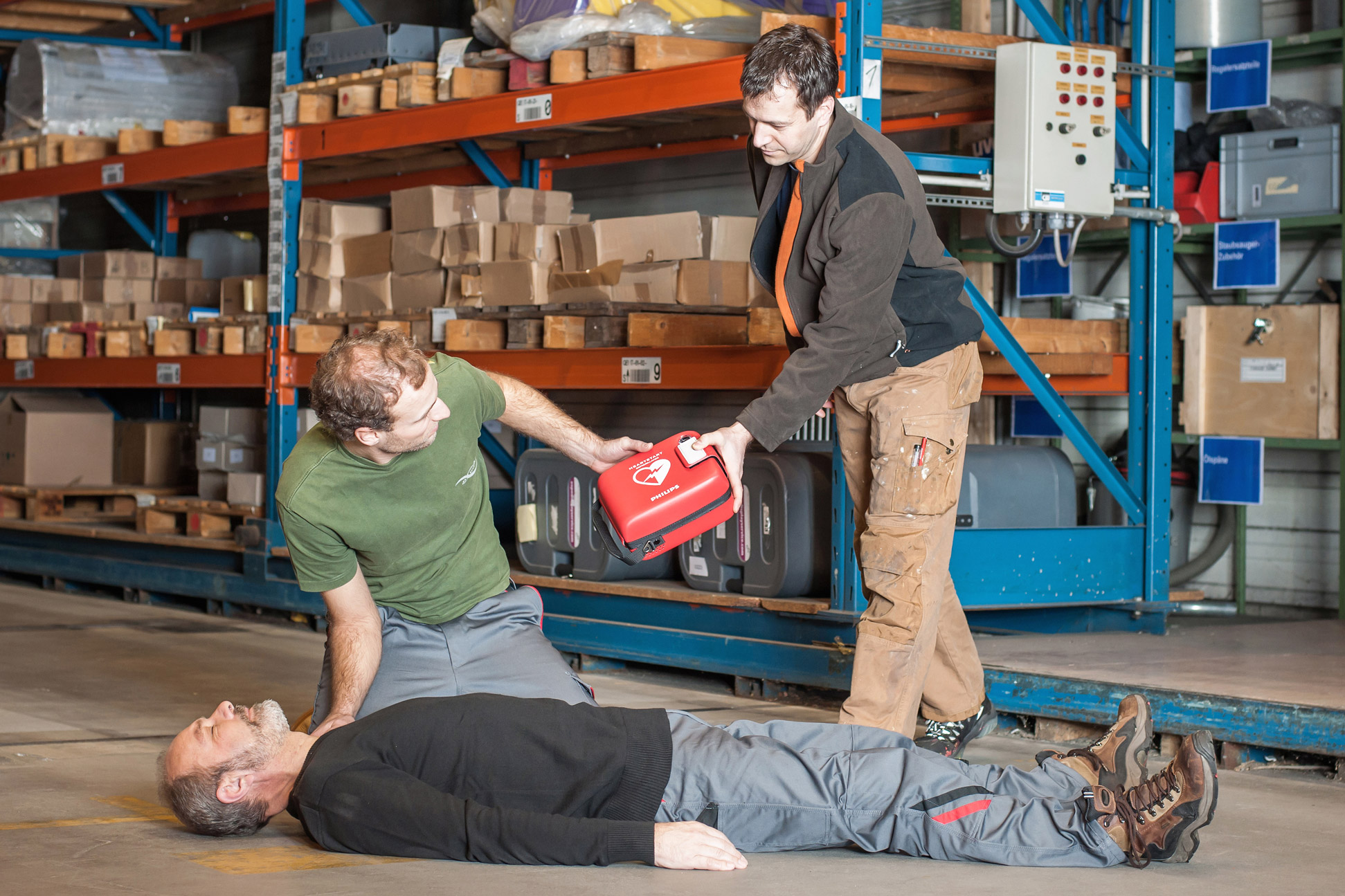
Shock Delivery
Based on the analysis of the heart rhythm, AEDs automatically charge and prompt the user to deliver a shock. Or, in the case of fully automatic models, deliver the shock without user intervention.
Self-Testing
AEDs are equipped with self-testing capabilities. Internal systems check the defibrillator’s operational status, battery life, and pad readiness, alerting to any maintenance that may be required.
Battery Powered
AEDs are powered by specialized batteries, making them portable and reliable in various settings without the need for an additional external power source.
Portability
Featuring lightweight and compact designs, all AEDs are portable and can be easily stored or mounted in public spaces such as schools, gyms, and offices.
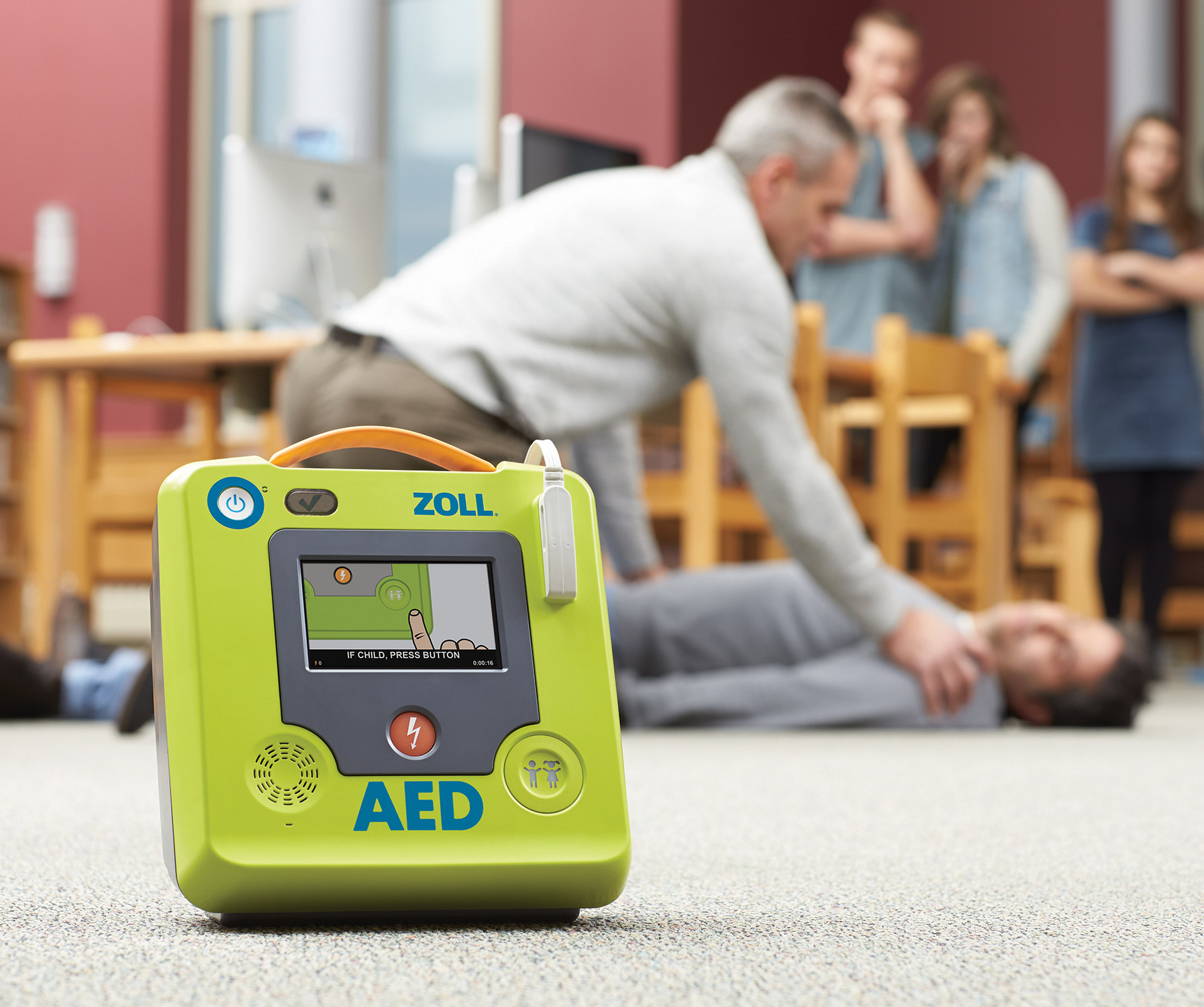
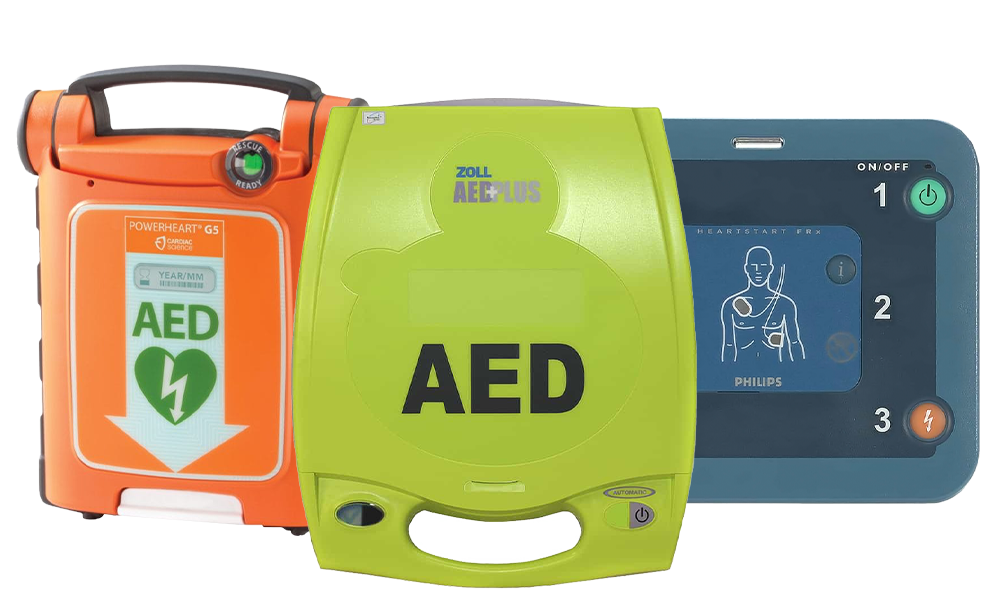
Other AED Features
Besides their basic functions, some AEDs come with additional features to make rescues easier, better fit certain environments or integrate with EMS. Here are some distinct features to look for when considering the right device for your needs:
Some AEDs include CPR feedback tools that guide rescuers with live, real-time feedback to perform CPR chest compressions at the right tempo and depth.
Many AEDs have special pediatric pads or a key that enables child-safe shocks. This feature is a must-have for environments like schools, pediatric offices, or churches where children are present.
Certain Automated External Defibrillators come with pre-connected pads, reducing a setup step and saving valuable seconds during an emergency.
Advanced AEDs may include screen displays, showing detailed instructions, diagrams, or even videos. These displays give additional guidance to the user, which is especially helpful in noisy or chaotic environments.
Some AEDs record event data, including specific timing, number of shocks delivered, and heart rhythm. This information can be crucial for healthcare providers for follow-up care. Certain defibrillators can also wirelessly transmit data to EMS in real-time or post-event.
Having an AED with multiple language options can be extremely valuable. Certain devices can switch between languages with a simple click, ensuring more users can understand and follow instructions.
For AEDs stored outdoors, in vehicles, near pools, or for first responders, some models have higher IP ratings, and enhanced durability features like higher dust and moisture resistance.
Owning an AED
Whether you’re purchasing a single AED or a fleet of AEDs for multiple facilities, a life-saving Automated External Defibrillator represents an investment. In order to make the most of your investment and reduce your long-term cost of ownership, here’s our tips for keeping a rescue-ready AED:
Regular Checks: Regularly check your AED to ensure the device and components appear in good condition. Most AEDs have a built-in self test function to check electrical components, battery life, and software. Check that these self-tests come back positively.
Storage: Store the AEDs in central, accessible, and well-marked locations. Avoid storing AEDs in places with extreme temperature changes or moisture.
Training: 50% of employees don’t know where their AED is located. Regularly train your team on AED locations, basic AED operation, CPR, and other first-aid emergency response.
Battery and Pad Replacement: Replace the battery and electrode pads according to the manufacturer’s recommended schedule, (typically every two to five years) or if used during an emergency.
Record Keeping: Keep a log of maintenance activities, training, component expiration dates, and any time you use the AED.
How Do AEDs Work? A Step-by-Step Guide
Automated External Defibrillators are designed to be simple, intuitive, and easy to use by anyone to save a life in a cardiac emergency. Here’s a quick guide on how AEDs work.
As soon as you get to the AED, turn it on. Most AEDs have a simple button to press, or automatically turn on when the lid is opened.
The AED will have clear visual and audio instructions. Peel the adhesive pads and attach them to the patient’s bare chest as indicated by the diagrams on the pads.
Pause CPR, and make sure no one is touching the patient. The AED will analyze the heart’s rhythm and determine if a shock is necessary.
If the AED decides a shock is needed, it will charge itself and instruct you to ensure everyone is standing clear of the patient. Press the ‘shock’ button when prompted.
After the shock, or if no shock is advised, resume CPR. Some AEDs will guide you through CPR with a metronome or prompts to ensure you maintain the correct pace and depth.
Continue to follow the AED’s instructions until emergency medical services arrive. The device will reanalyze the heart rhythm periodically and instruct you to deliver additional shocks if necessary.
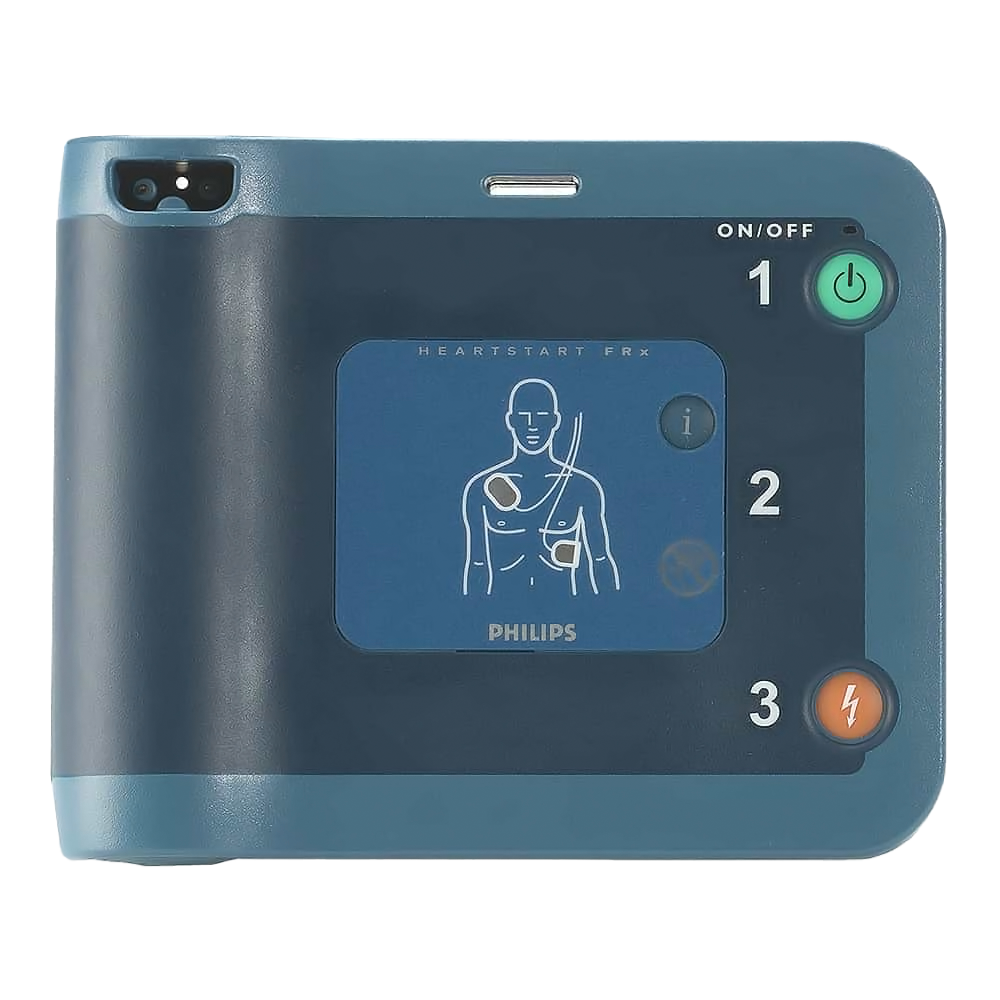
AEDS FOR YOUR INDUSTRY

AED FAQ
Here’s the questions we get most often about how to buy an AED, maintenance, usage, and placement:
AEDs are designed to be used by anyone. They provide clear, step-by-step voice instructions to guide even untrained users through the process.
AEDs should be installed in easily accessible and visible locations such as near elevators, main reception areas, or central gathering points.
AED maintenance typically includes regular checks of the AED self-test light, checking battery life and pad expiration, and annual preventative maintenance to ensure device functionality.
The cost of an AED can vary widely depending on new vs recertified, features, and brand, typically ranging from $700 to over $2,000.
Some states require schools, doctors offices, gyms, and other public spaces to keep and maintain an AED, as well as CPR training.
No formal training is required to use an AED, but many organizations choose to provide CPR and AED training to their staff to improve preparedness and comfort in the event of an emergency.
Many AEDs come with pediatric pads or a pediatric key, which reduces the shock to a level safe for children and infants. Check if your AED has pediatric capability before using it on children.
AEDs are very safe to use. The biggest risk is failing to adhere to the device’s instructions, such as ensuring no one is touching the patient during defibrillation.
Consider factors such as ease of use, cost, maintenance, other features like CPR feedback or pediatric support, and whether the model is suited to the likely environment of use.
Why Choose Master Medical Equipment?
The importance of AEDs in the industrial sector, including factories, offices, manufacturing plants, and corporate workplaces cannot be overstated. Your employees, customers, and visitors are the lifeblood of your business.
We’ve helped thousands of organizations place and maintain life-saving AEDs in their facilities, from schools, churches, airports, stadiums, offices, factories, government buildings, parks, homes, and so much more. We’ve seen countless lives saved by devices we’ve distributed, both in our local community and across the nation. We’re a locally owned and operated company that’s built our reputation by selling public-access and professional medical devices for over a decade and a half. When you call us, you talk to a real AED expert every time, and don’t go to an automated phone tree.
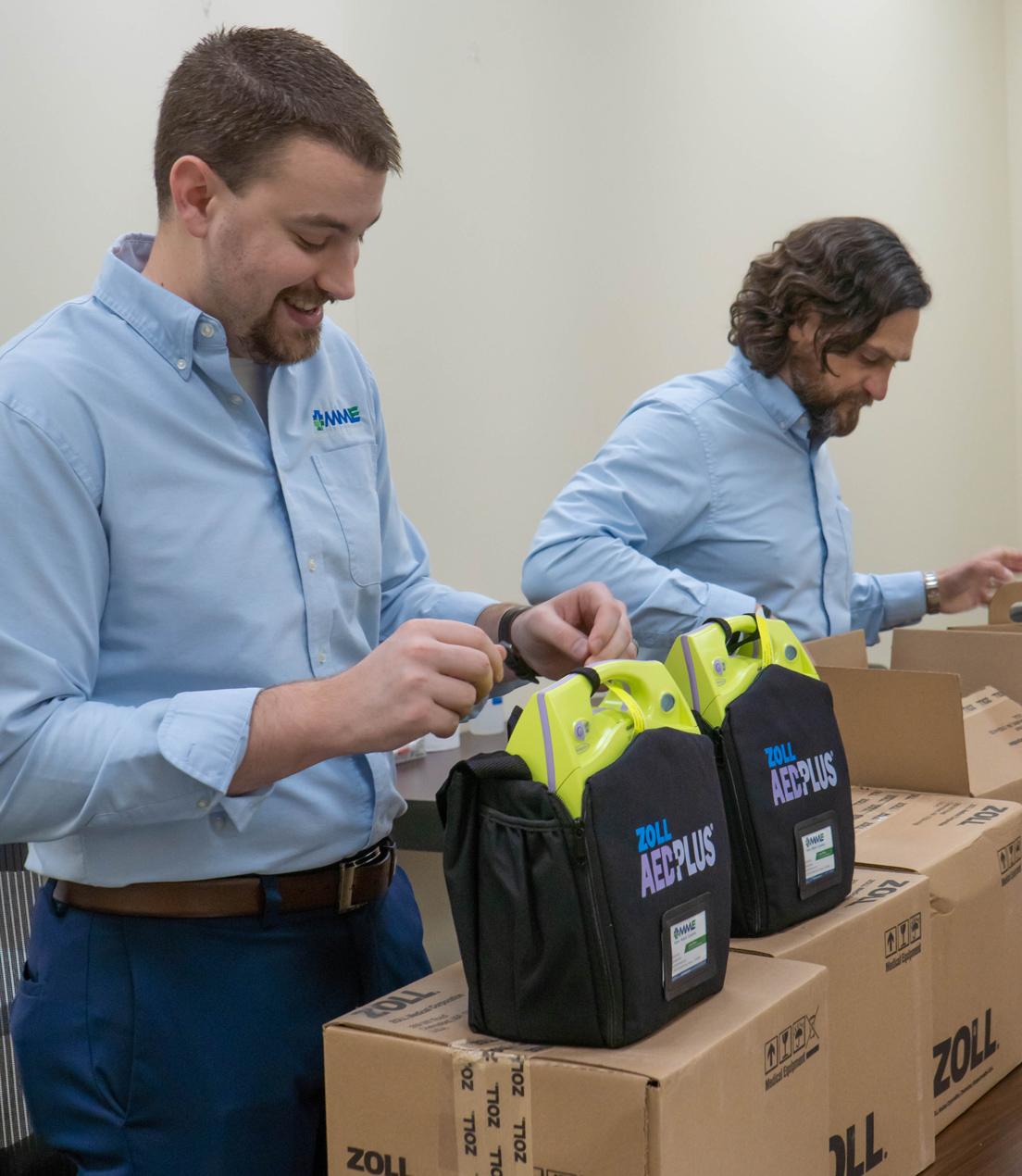
1,100+

AED News and Market Updates
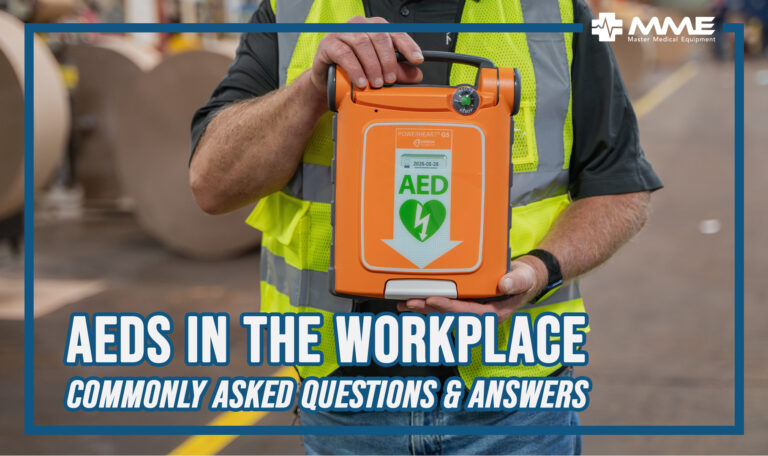
AEDs In The Workplace: Commonly Asked Questions & Answers
Q: How Do I Determine How Many AEDs Are Needed for My Facility? The number of AEDs you need depends on the size of your facility and the number of employees. For smaller offices, a single defibrillator might be sufficient, while larger industrial sites will require many units strategically placed. Safety guidelines suggest that an […]
Read The Article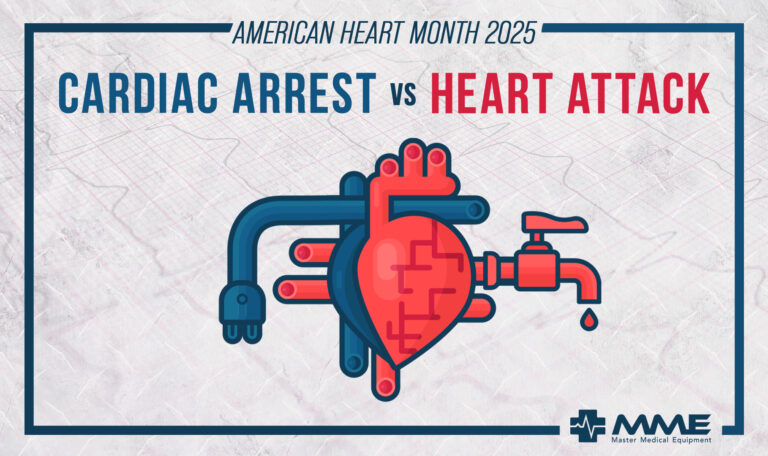
Cardiac Arrest vs. Heart Attack: American Heart Month 2025
Cardiac Arrest vs. Heart Attack: American Heart Month 2025 February is American Heart Month, a time to raise awareness about heart disease and the importance of heart health. During this month, we focus on educating ourselves about the different types of heart-related emergencies, especially cardiac arrest and heart attacks (and make sure you check out […]
Read The Article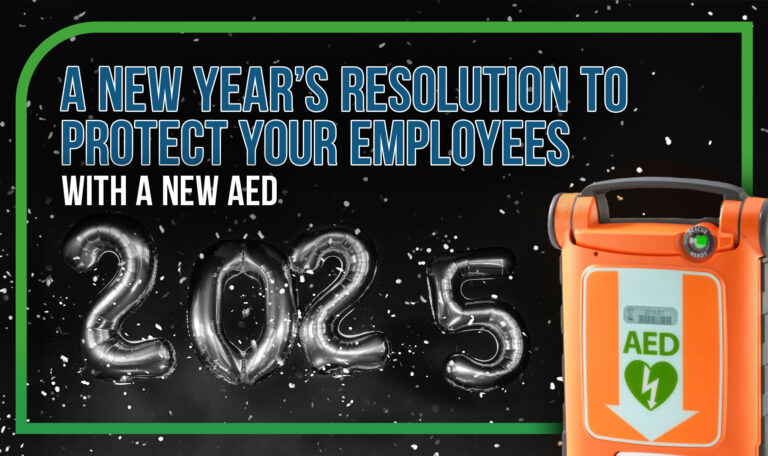
A New Year’s Resolution to Protect Your Employees with an AED
As we roll into the new year, companies are thinking about ways to improve and make positive changes—whether it’s setting new goals, enhancing productivity, or focusing on employee well-being. But here’s one thing that often gets overlooked in the midst of new year resolutions: workplace safety. The leading cause of death in the United States […]
Read The Article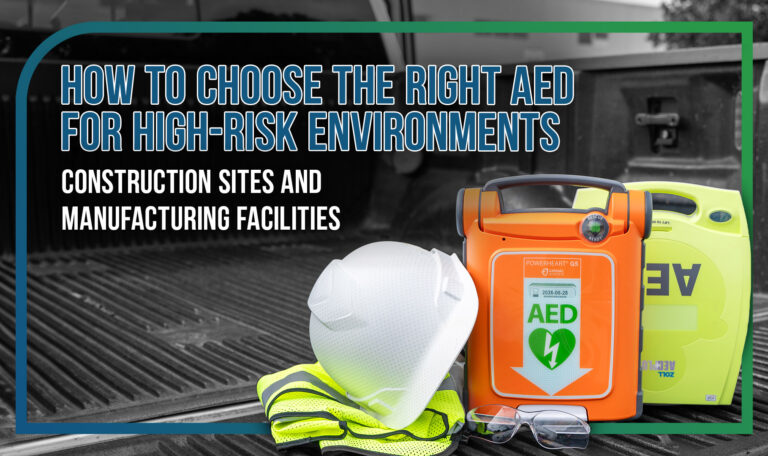
How to Choose the Right AED for High-Risk Environments (Construction Sites and Manufacturing Facilities)
When it comes to workplace safety, one of the easiest investments you can make is having an Automated External Defibrillator (AED) on-site. For companies operating in high-risk environments like construction sites and manufacturing facilities, the need for life-saving equipment is even more critical. With the physical demands of the job, as well as physical activity […]
Read The Article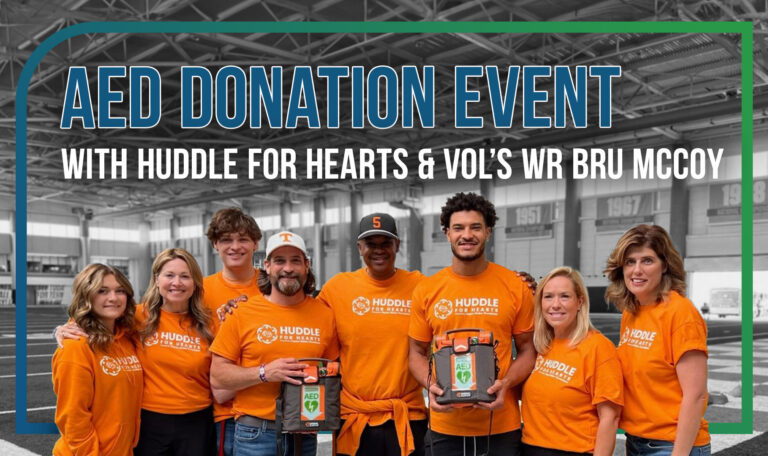
MME Provides AEDs for Donation with Bru McCoy & Huddle for Hearts
KNOXVILLE, TN – November 10, 2024 Master Medical Equipment was honored to participate in an AED (Automated External Defibrillator) donation event alongside UT Vols wide receiver Bru McCoy and Huddle for Hearts on Sunday in Knoxville, TN. Bru and Huddle for Hearts distributed AEDs to several youth athletic organizations, schools and community groups as part […]
Read The Article
